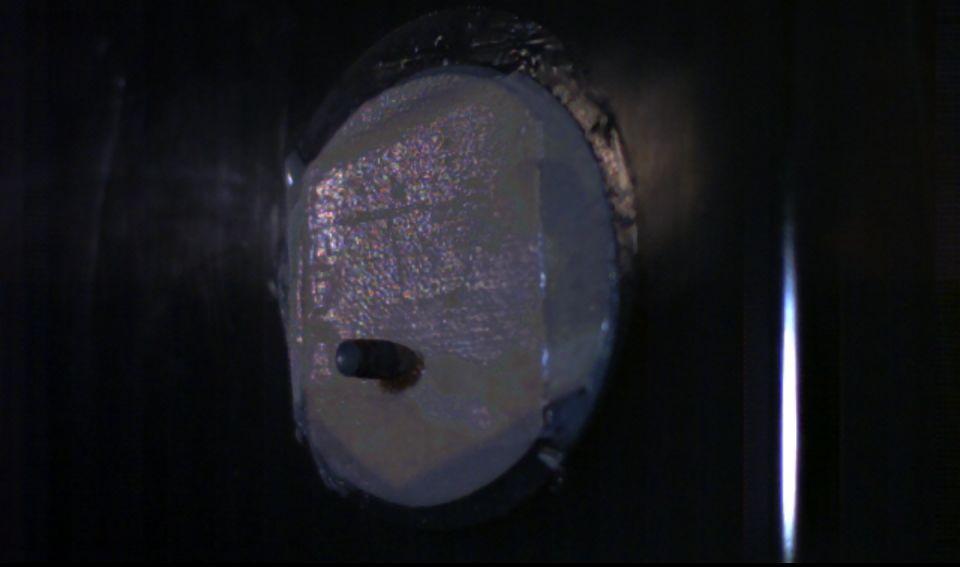‘Bulletproof skin’ made from spider silk, human tissue (VIDEO)
A still from artist Jalila Essaïdi’s experiment with bioengineered “skin,” reinforced with spider-silk proteins in order to resist a speeding bullet.
A new tissue made of human skin cells and spider silk appears to be able to stop a speeding bullet.
The "bulletproof skin" is the result of a collaboration between artist Jalila Essaïdi and scientists and technicians in America, South Korea, Germany and the Netherlands.
More from GlobalPost: Scientists create silkworm-spider hybrid that spins super-strong silk
The inspiration for the project – named '2.6g 329m/s' after the weight and speed of bullet standard bulletproof vests are required to withstand – came from Genghis Khan, Essaïdi explains on her website: the legendary emperor is said to have issued his horsemen with silk vests, "as an arrow hitting silk does not break it but ends up embedded in the flesh wrapped in silk."
Spider silk is far stronger than the silkworm fibers that most commonly make up manufactured silk, and indeed than Kevlar, the synthetic material currently used to make bulletproof vests. Scientists have long been investigating the possibility of producing an artificial fiber with the same properties, as US army researcher Stephen Fossey told New Scientist in 1992:
Stephen Fossey, one of the researchers [at Natick army research center], explains that Kevlar, the DuPont fiber, "can elongate up to 4 percent before breaking, while spider silks can stretch by as much as 15 percent before breaking." Silk therefore absorbs much more kinetic energy – from a bullet, for example – without the vest failing.
Since then, scientists have been able to produce hybrid silk fibers by transplanting spider genes into silkworms and even goats. Essaïdi decided to take those developments a step further by implanting the reinforced silk into layers of human skin cells, in order to explore what it would be like to create "a bulletproof human."
More from GlobalPost: Making clothing out of milk
According to New Scientist, the spider silk was spun at Utah State University in the US, reeled into thread in South Korea, woven in Germany, and sandwiched between layers of bioengineered skin cells at the Leiden University Medical Center in the Netherlands.
Essaïdi took the resulting patch of "skin" to the Netherlands Forensic Institute to conduct ballistic tests. You can see the results in this slow-motion video:
The tissue successfully cushioned a bullet fired at half speed. At the full 329 m/s, however, the bullet pierced the material.
Essaïdi nonetheless hails the experiment as a success, and says she is looking into potential practical uses for the "skin" as well as exhibiting it as part of her artistic work.
